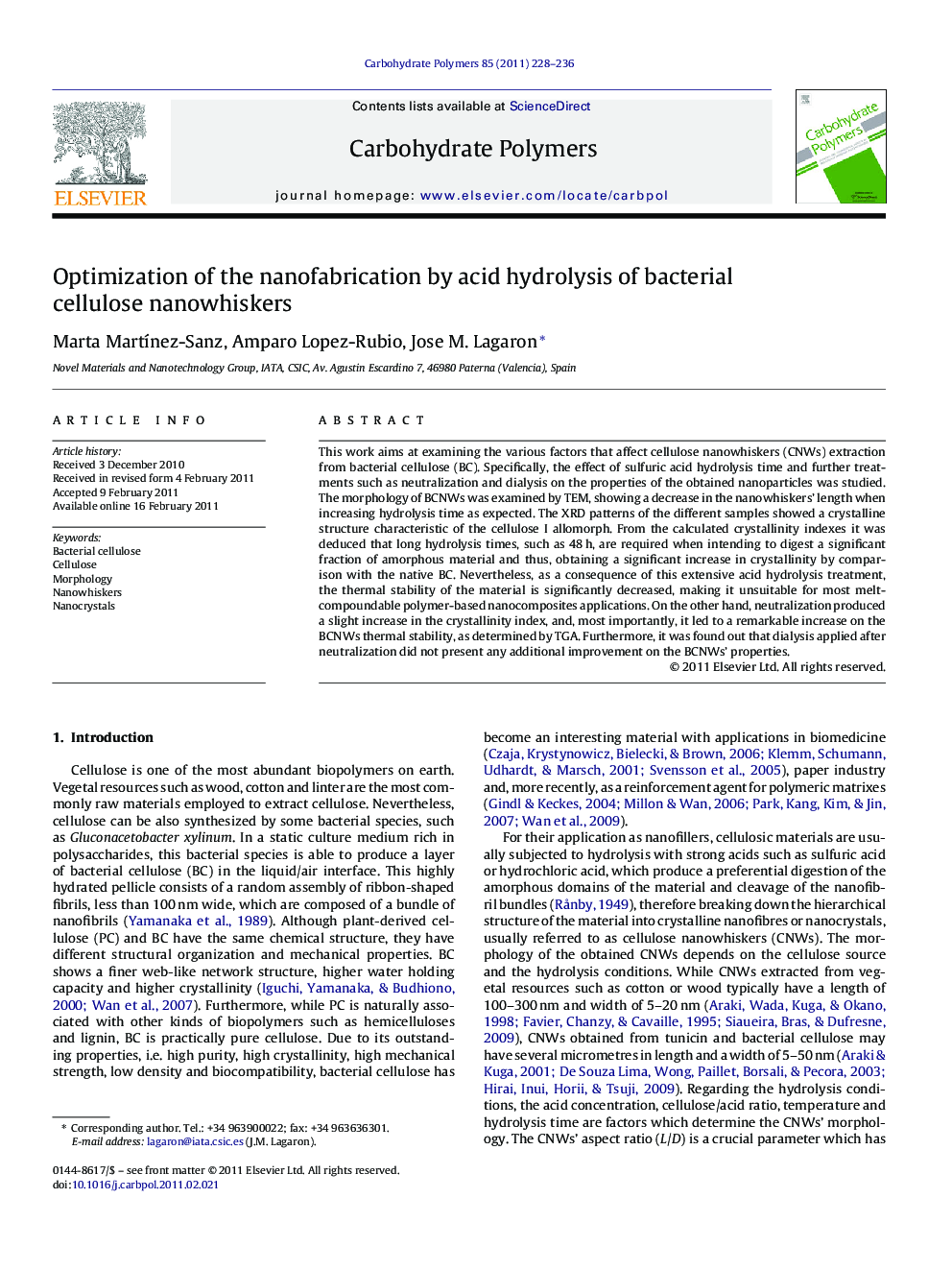| Article ID | Journal | Published Year | Pages | File Type |
|---|---|---|---|---|
| 1384190 | Carbohydrate Polymers | 2011 | 9 Pages |
This work aims at examining the various factors that affect cellulose nanowhiskers (CNWs) extraction from bacterial cellulose (BC). Specifically, the effect of sulfuric acid hydrolysis time and further treatments such as neutralization and dialysis on the properties of the obtained nanoparticles was studied. The morphology of BCNWs was examined by TEM, showing a decrease in the nanowhiskers’ length when increasing hydrolysis time as expected. The XRD patterns of the different samples showed a crystalline structure characteristic of the cellulose I allomorph. From the calculated crystallinity indexes it was deduced that long hydrolysis times, such as 48 h, are required when intending to digest a significant fraction of amorphous material and thus, obtaining a significant increase in crystallinity by comparison with the native BC. Nevertheless, as a consequence of this extensive acid hydrolysis treatment, the thermal stability of the material is significantly decreased, making it unsuitable for most melt-compoundable polymer-based nanocomposites applications. On the other hand, neutralization produced a slight increase in the crystallinity index, and, most importantly, it led to a remarkable increase on the BCNWs thermal stability, as determined by TGA. Furthermore, it was found out that dialysis applied after neutralization did not present any additional improvement on the BCNWs’ properties.
